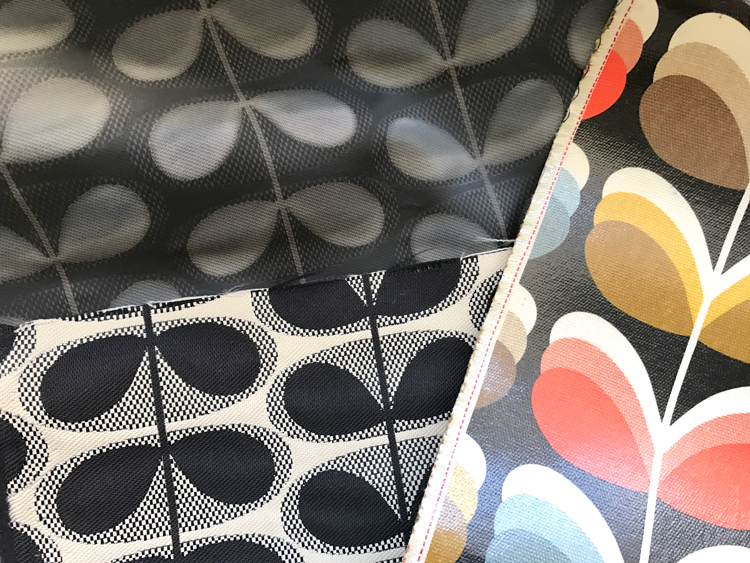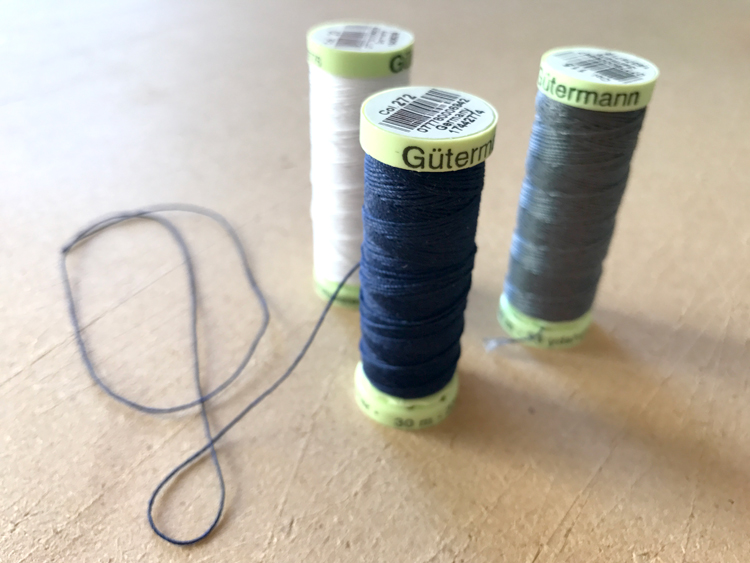When sewing your own bags and purses, it really pays to take the time to sew it nice and strong. Not only will that ensure that you do not bust a seam and lose things along the way, but it's always better to sew things that are built to last.

Make this in Sew Sturdy: The Essential Backpack
Here are a few tips to help you sew a strong bag for your next project
1. Choose strong hardware

Cheap, thin metal will bend under the pressure of strain, so it's absolutely worth spending a few extra dollars on quality, strong hardware for your bag. Besides, look how shiny and professional quality hardware looks — no one will guess your bag is handmade!
Also, consider the seams in the metal itself. If there are any weak points, that is precisely where the metal will give and break open one day.
2. Use heavy-duty fabrics

Strong fabrics result in a strong bag. Makes sense, yes? But how can you tell which fabrics are stronger than others? Just selecting a fabric based on the fiber alone is not enough to ensure durability.
For example, take cotton. Cotton can be woven into feather-weight cotton lawn, but it also can be woven to create the strongest of denim. Even with the strongest denim, natural fibers wear faster than synthetic fibers. So something like a cotton and polyester blend might be stronger than just straight cotton.
3. Consider coated fabrics

You already know that it's best to choose a heavy and durable fabric, but if you want to take the strength to another level, consider using a fabric that is coated. There are laminated cottons, oilcloth and fabrics treated with water resistant coatings that will not only be stronger than fabrics without a coating, but they'll also help repel water.
4. For extra sturdy bags, use leather or vinyl
If heavy-duty fabrics or coated fabrics still are not durable enough for the bag you're planning, consider using leather or vinyl instead. Both options are incredibly strong and if treated well, will last a lifetime.
Be sure to do your research on leather weights and finishes though: much like with cotton, leather isn't always thick and strong. Goat leathers are buttery soft and thin, and will make for a very soft and unstructured bag. But thick cow hide will be significantly stronger and will last longer.
Note that when working with these materials, you really want to plan your seams ahead and how you will sew them, as most light-weight home sewing machines will not be able to handle seams of multiple layers of leather.
5. Pick a heavy interfacing
Interfacing is really your friend when sewing up bags. If your fabric can adhere to a fusible interfacing, you can apply a heavy fusible interfacing directly onto the fabric to strengthen it.
But sometimes, the fabric you select for your bag will not take well to fusible interfacing. For those, you can simply use a sew-in interfacing between the layers of the outer and lining fabrics to beef up the thickness.
You can also find sturdy and stiff interfacings for the bottom of a bag to create a firm and stable base, which is ideal for bags that you plan to use for traveling.
6. Use a thick thread

Heavy-duty or coated fabrics won't make any difference at all if the thread holding it all together is thin and weak.
Consider sewing your bag together with a heavy-weight thread to keep the seams stronger. Think about the fiber content of the thread as well. I love sewing with cotton thread, but because it is a natural fiber, it will break under stress long before a synthetic thread like polyester will.
If you're working with leather, glues will also help strengthen seams. Consult a leather supply shop for the best threads and glues for assembling your leather bag.
7. Reinforce your stitching and seams

The key to creating something strong is to identify the weak points in advance. On bags, one major point of strain is the connection of the handle or strap to the bag itself.
When attaching the handle, instead of just sewing a simple row of stitching, reinforce the point with a square and X through the center for tons of strength. Rivets through a strap are an added level of durability if you want to take it even one step further.
The seams at the bottom of your bag are also a point of strain, so strengthening the seams from the inside can keep you from busting a seam. Flat fell seams, bound seams and French seams all have multiple rows of stitching and will create stronger seams. A lining, also sewn with reinforced seams, will be yet another layer of strength along the bottom of your bag.
8. Sew with strong needles

And don't forget, if you're sewing through lots of thick fabrics and interfaced layers, be sure to save yourself a lot of hassle by picking a strong heavyweight needle to sew your project together. A lightweight needle will break under the pressure of sewing the heavy fabrics, which will send metal flying — dangerous! So save your eyes and pick a good heavy needle for the job! Leather needles have a wedge point end meant to pierce through leather, vinyl and coated fabrics, and come in a variety of weights.

Sew Better Bags!
Bring greater style and structure to all of your handbags! Learn how to easily install linings, zippers, pockets, handles and more in any bag project.

Hi, I have a question that I hope someone answer for me. I purchased a pre-made chair organizer for school kids chair back. After I purchased it I saw reviews that the seams tear. I'm very very new to sewing, but have a basic sewing machine. Is there anyway I can reinforce the seams to prevent this tearing? TIA
I want to join